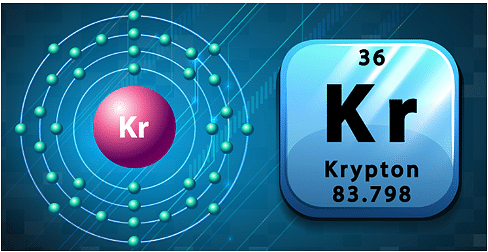
You can effortlessly find every single detail about the elements from this single Interactive Periodic table. Typically used in medical, electronic and lighting industries. This article contains comparison of key thermal and atomic properties of krypton and xenon, two comparable chemical elements from the periodic table.

The melting point of a substance is the temperature at which this phase change occurs. In general, melting is a phase change of a substance from the solid to the liquid phase. The cross-sectional area calculated from the density of the supercooled liquid krypton is 15.2 Ų, but larger cross-sectional areas of up to 23.6 Ų 1, 4 are often used. Note that, these points are associated with the standard atmospheric pressure. density of krypton is equal to 3.7493 kg/m³ at 0☌ (32☏ or 273.15K) at standard atmospheric pressure. density of krypton is equal to 3.7493 kg/m³ at 0☌ (32☏ or 273.15K) at standard atmospheric pressure.In Imperial or US customary measurement system, the density is equal to 0.23406 pound per cubic foot lb/ft³, or 0. Another uncertainty is the effective cross-sectional area of krypton, which is very much dependent on the adsorbent surface and is therefore not well established. 3.7493 kilograms kg of Krypton fit into 1 cubic meter 0.00216723 ounce oz of Krypton fits into 1 cubic inch Krypton weighs 0.0037493 gram per cubic centimeter or 3.7493 kilogram per cubic meter, i.e. Let me tell you how this Interactive Periodic Table will help you in your studies.ġ). Krypton is a colorless, odorless, inert gas. About Krypton Krypton weighs 0.0037493 gram per cubic centimeter or 3.7493 kilogram per cubic meter, i.e. Accurate ab initio potential for the krypton dimer and transport properties of the low-density krypton gas. In 2019, prices of pure Krypton were at around 330 /kg.

electron density prompts electrons persuasive worksheets answers writing.
#DENSITY OF KRYPTON FREE#
(note) This density is at 0 ☌ temperature and 101.325 kPa pressure 87 Francium (Fr) no data 88 Radium (Ra) 5 g/cm 3 89 Actinium (Ac) 10.07 g/cm 3 90 Thorium (Th) 11.725 g/cm 3 91 Protactinium (Pa) 15.37 g/cm 3 92 Uranium (U) 19.05 g/cm 3 93 Neptunium (Np) 20.45 g/cm 3 94 Plutonium (Pu) 19.82 g/cm 3 95 Americium (Am) 13.67 g/cm 3 96 Curium (Cm) 13.51 g/cm 3 97 Berkelium (Bk) 14.79 g/cm 3 98 Californium (Cf) 15.1 g/cm 3 99 Einsteinium (Es) no data 100 Fermium (Fm) no data 101 Mendelevium (Md) no data 102 Nobelium (No) no data 103 Lawrencium (Lr) no data 104 Rutherfordium (Rf) no data 105 Dubnium (Db) no data 106 Seaborgium (Sg) no data 107 Bohrium (Bh) no data 108 Hassium (Hs) no data 109 Meitnerium (Mt) no data 110 Darmstadtium (Ds) no data 111 Roentgenium (Rg) no data 112 Copernicium (Cn) no data 113 Nihonium (Nh) no data 114 Flerovium (Fl) no data 115 Moscovium (Mc) no data 116 Livermorium (Lv) no data 117 Tennessine (Ts) no data 118 Oganesson (Og) no data Free Gift for you: Interactive Periodic Table They are primarily driven by supply, demand and energy prices. the lanthanide elements Argon, Krypton, and Xenon are noble gases In.


 0 kommentar(er)
0 kommentar(er)
